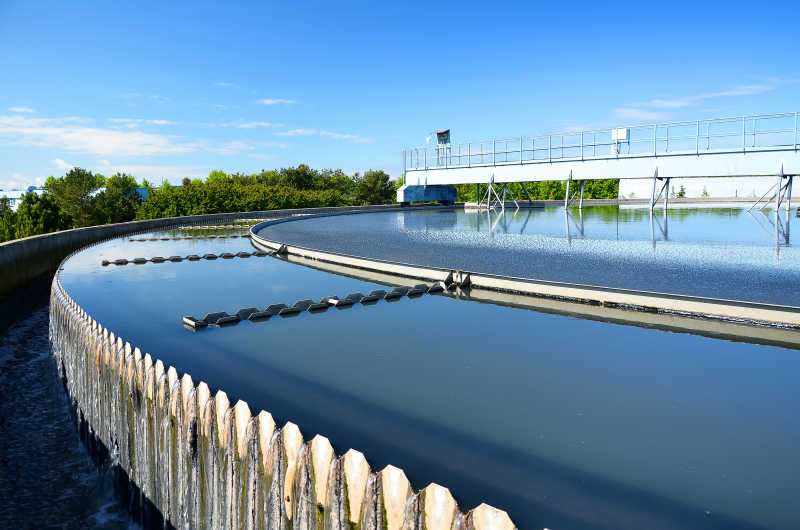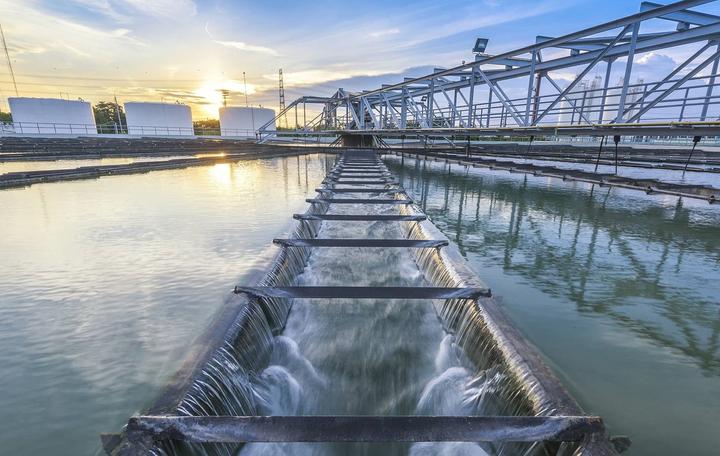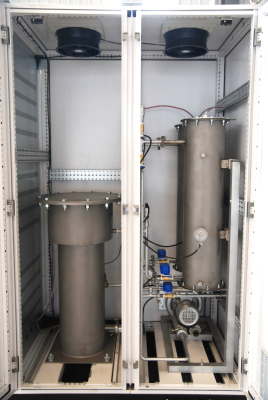Advanced Oxidation Technologies for Sewage Deep Treatment: Comparison and Selection
With the release of pollutant discharge standards by local governments, sewage treatment plants are facing the problem of upgrading and renovating. Even for municipal sewage treatment plants, sometimes a certain proportion of industrial wastewater is mixed into the incoming water, making the composition of the raw water more complex and the content of difficult to degrade organic matter higher. This poses great difficulties for CODCr compliance in the upgrading and renovation of sewage treatment plants.
The government has successively issued the "Ten Measures for Water" and the "Guidelines for the Remediation of Urban Black and Odorous Water Bodies", proposing time nodes for improving the quality of water environment nationwide and the remediation of urban black and odorous water bodies. Local governments have also successively introduced pollutant discharge standards for sewage treatment plants. The core indicator is to reduce the COD content in water to 50mg/L, 30mg/L according to different standard requirements, and even to below 20mg/L in order to achieve reuse value. The application of advanced oxidation technology in the deep treatment of sewage treatment plants is increasing.
There are three advanced oxidation processes for removing CODcr from water, namely Fenton oxidation process, ClO2 catalytic oxidation process, and O3 catalytic oxidation process. Now, an economic and technical comparison is conducted for the above three catalytic oxidation processes.
Fenton oxidation process
The combination of ferrous salts and hydrogen peroxide is called Fenton reagent, which can effectively oxidize and remove difficult to degrade organic compounds that cannot be removed by traditional wastewater treatment techniques. Its essence is that H2O2 generates highly reactive hydroxyl radicals (· OH) under the catalytic action of Fe2+, which can react with most organic compounds to degrade them.
Characteristics of Fenton oxidation process
1) Oxidation is non selective and has strong ability to remove organic matter;
2) Organic matter ultimately decomposes into CO2 and H2O, with no toxic or harmful intermediate products, ensuring safety and environmental protection;
3) The pH value of the sewage needs to be between 2 and 4. The sewage needs to be adjusted to acidic and then adjusted to neutral after oxidation is complete;
4) The high consumption of chemicals required for the complete degradation of COD results in high treatment costs;
5) Quick response time is short.
Fenton oxidation is suitable for high applications, resulting in high processing costs;
The Fenton reagent oxidation method is difficult to apply in large and medium-sized sewage treatment plants due to the need for acid and alkali adjustment, high reagent consumption, long reaction time, and large sludge volume.
The Fenton reagent oxidation method is suitable for small and micro wastewater treatment plants with acidic incoming water, especially for the treatment of acidic wastewater in some dye, pesticide, and pharmaceutical intermediate enterprises.
ClO2 catalytic oxidation process
Chlorine dioxide catalytic oxidation method is one of the advanced oxidation technologies for water treatment, which is improved and developed on the basis of chemical oxidation method. The principle of chlorine dioxide catalytic oxidation is to use a strong oxidant - chlorine dioxide - to catalyze the oxidation of organic pollutants in wastewater under normal temperature and pressure, in the presence of surface catalysts. The organic pollutants are directly oxidized into carbon dioxide and water, or large molecule organic pollutants are oxidized into small molecule organic pollutants, improving the biodegradability of wastewater and effectively removing organic pollutants.
Characteristics of ClO2 catalytic oxidation process
1) The oxidation ability of ClO2 is long-lasting;
2) The reaction between ClO2 and organic compounds produces almost no divergent organic chlorides and no carcinogenic trichloromethane;
3) The reaction with organic compounds exhibits significant selectivity, and the oxidation ability is highly correlated with the types of substituents on the organic compounds. The use of efficient catalysts overcomes their selectivity for organic matter oxidation;
4) The degradation of organic matter mainly generates small molecule compounds with oxygen groups, which can increase the BOD5 value of wastewater and improve biodegradability;
5) The pH value of the sewage needs to be slightly acidic (around 6), so it is necessary to adjust the sewage to acidic and then adjust it to neutral after oxidation.
6) Reaction time: between 45 and 60 minutes.
2. Applicable occasions for ClO2 catalytic oxidation
Due to the acidic pH value (around 6) required by chlorine dioxide catalytic oxidation technology, the sewage needs to be adjusted to acidic and then to neutral after oxidation, which limits its application in large and medium-sized sewage treatment plants.
Due to the significant selectivity of the reaction between chlorine dioxide and organic compounds, it is necessary to select suitable catalysts. In practical applications, the selection of catalysts is complex and difficult, which limits its promotion and application in industrial wastewater.
At present, the fields where chlorine dioxide catalytic oxidation technology has been successfully applied include:
1) Good results have been achieved in the treatment of coal gas wastewater, high concentration cyanide containing wastewater, para aminobenzyl ether wastewater, phenol formaldehyde wastewater, and printing and dyeing wastewater, which can remove most difficult to degrade organic pollutants and improve the biodegradability of wastewater;
2) It has good decolorization and COD removal effects on easily oxidizable water-soluble dyes such as cationic dyes, azo dyes, and easily oxidizable water-insoluble dyes such as sulfide dyes.
Ozone catalytic oxidation process
Ozone catalytic oxidation is the use of hydroxyl radicals [· OH] generated by ozone under the action of a catalyst to oxidize and decompose organic pollutants in water. Due to the strong oxidation ability of · OH and the non selective oxidation reaction, it can rapidly oxidize and decompose the vast majority of organic compounds (including some highly stable and difficult to degrade organic compounds).
Activated carbon catalysts loaded with metals are composite materials composed of a mixture of small crystalline and amorphous parts, and the catalyst surface contains a large number of acidic or basic functional groups. The presence of these acidic or basic functional groups, especially hydroxyl and phenolic hydroxyl groups, gives the catalyst not only adsorption ability but also catalytic ability. In the synergistic process of ozone/catalyst, ozone is decomposed under the action of the catalyst to produce [· OH], which triggers a chain reaction. This reaction also produces highly reactive and strong oxidizing single atom oxygen [· O].
Characteristics of Ozone Catalytic Oxidation
1) Extremely strong ability to oxidize organic pollutants and remove organic matter;
2) The participation of catalysts greatly reduces oxidation selectivity and is almost universally applicable;
3) Organic matter ultimately decomposes into CO2 and H2O, with no toxic or harmful intermediate products, ensuring safety and environmental protection;
4) The pH value can be neutral or alkaline, and there is no need to adjust the pH value of the wastewater;
5) Ozone generator generates ozone from electricity and air, without chemical agents, ensuring safety and hygiene on site;
6) The oxidation reaction time is relatively short, generally controlled at around 30 minutes, and the reactor volume is small.
Applicable occasions for ozone catalytic oxidation
Due to the above characteristics, ozone catalytic oxidation technology is almost suitable for CODcr degradation in large, medium, and small sewage treatment plants for all types of wastewater. By comparing the above three oxidation processes, the ozone catalytic oxidation process has good treatment effect, wide applicability, and mature technology. At the same time, there are many successful applications in domestic and foreign sewage treatment plants.
Due to the fact that the wastewater to be deeply treated is the effluent from a sedimentation tank that has undergone biological aerobic treatment, the BOD/COD ratio of the wastewater is already quite low. To further reduce the COD value, advanced treatment methods must be used. Among all advanced treatment methods, ozone catalytic oxidation technology has good treatment effects, wide applicability, and mature technology. At the same time, there are many successful applications in domestic and foreign sewage treatment plants. Compared with other advanced oxidation methods, it has the advantages of low investment cost, high tolerance to water quality changes, easy operation and maintenance, and low operating costs.







